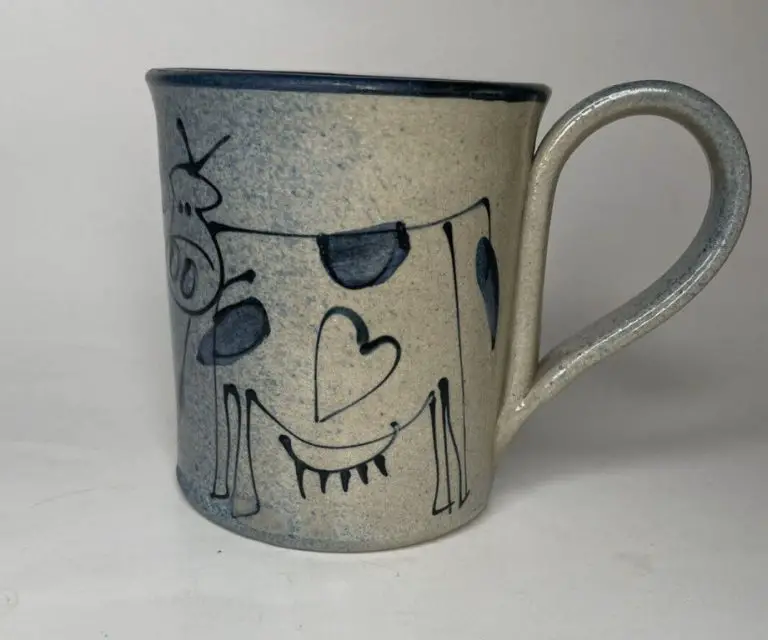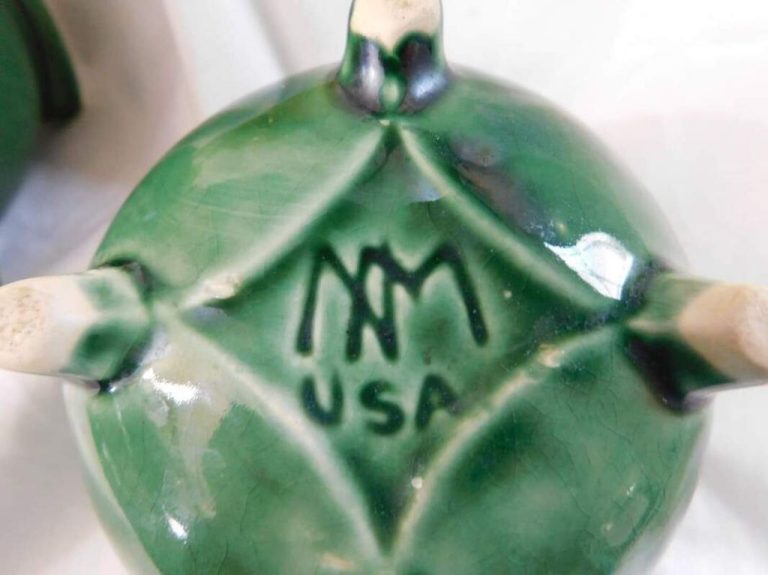Can Air Dry Clay Be Used As Plant Pots?
Air dry clay, also known as modeling clay, is a lightweight modeling material that can be shaped and sculpted when moist. Unlike traditional pottery clay that requires firing in a kiln, air dry clay hardens naturally as it dries through evaporation. The clay consists of water, minerals, and natural polymers. Once completely dry, it becomes hard and durable while still retaining a lightweight, flexible quality.
With its moldable texture and ability to harden at room temperature, air dry clay has become a popular choice for crafting and DIY projects. Many crafters and artists use it to handcraft clay pots, figurines, jewelry, and more. The accessibility and versatility of air dry clay has made it a convenient option for creating homemade plant pots. But how suitable is it for housing live plants? Here we’ll explore the pros and cons and best practices for using air dry clay pots for plants.
Pros of Using Air Dry Clay as Plant Pots
One of the biggest advantages of using air dry clay for plant pots is that it’s an extremely inexpensive and readily accessible material. Air dry clay, also sometimes called modeling clay, can be easily found at most craft and art supply stores. It’s one of the most budget-friendly clays, typically costing just a couple dollars for a sizeable brick or package. This makes it ideal for beginner crafters or gardeners who want to try their hand at making their own planters and pots without a major investment. Air dry clay comes in a variety of colors, so it can be fun to experiment with different hues and designs. It also air dries at room temperature, eliminating the need for a kiln or other special equipment. For those with a creative flair looking to make unique, customizable pots on a budget, air dry clay can be the perfect solution.
Cons of Using Air Dry Clay as Plant Pots
While air dry clay offers creative flexibility as a material for DIY plant pots, it also has some drawbacks to consider:
Less durable than ceramic – Clay that air dries is more fragile than terra cotta or ceramic pots that have been fired in a kiln. As a result, air dry clay pots are more prone to cracking, chipping, and breaking, especially if dropped. The organic materials mixed into air dry clay to help it harden also cause it to be slightly porous. Over time, this can lead to the clay eroding from exposure to watering and the natural acids some plants produce.
Best Practices for Making Clay Plant Pots
When working with air dry clay to create plant pots, following some best practices will help ensure your pots turn out well and function properly for housing plants:
Allow adequate drying time. Air dry clay needs sufficient time to fully dry and harden before use. The drying time depends on factors like climate and thickness of the clay, but can take 1-7 days. Allow your clay pots to dry completely before adding soil or plants. Rushing this step risks cracks or crumbling. Patience is key. Test thickness by gently pressing on the pot’s walls – hardened clay will feel firm, while soft spots indicate the need for more drying time.
Additionally, consider drying clay pots in a warm spot out of direct sunlight. Rapid temperature changes can cause cracking as the clay dries. Placing pots on a baking rack allows air circulation underneath. Rotate pots occasionally so all sides dry evenly.
Choosing the Right Plants
When selecting plants for clay pots, it’s important to consider the plant’s watering needs. Clay is porous and allows moisture to evaporate through the sides of the pot. Therefore, choosing plants that prefer drier soil is ideal.
Succulents like sedum, echeveria, and aloe vera are great options as they store water in their leaves and thrive in dry, well-drained soil. Cacti are also suitable for clay pots since their shallow root systems don’t require frequent watering.
Herbs like rosemary, thyme, oregano, and sage also do well in clay pots. Their Mediterranean origins mean they are adapted to dry conditions.
Other drought tolerant plants to consider include lavender, trumpet vine, Chinese hibiscus, ornamental grasses, and certain types of ferns. Do research to select varieties that enjoy fast-draining soil.
Avoid choosing plants with high water needs, as their roots may rot if the soil gets too dry between waterings. Examples include impatiens, begonias, and moss—these are better suited for plastic or glazed ceramic pots.
Decorating Clay Plant Pots
One of the best parts about making your own clay plant pots is getting creative with decorations. Air dry clay provides a blank canvas to let your imagination run wild. There are lots of fun ways to decorate your homemade pots.
Paints and glazes are popular options for decorating clay plant pots. Acrylic and water-based paints are good choices that will adhere well to the clay surface. Make sure any paint you use is non-toxic since the plants will be in direct contact with the clay. Paints allow you to add any colors, designs, or patterns you’d like to your pots. Some ideas are solid colors, ombré effects, geometric shapes, or even hand-painted scenery.
Glazes are also great for decorating air dry clay pots. Glazes provide a glossy, glass-like finish and protective seal over the clay. You can find premixed glazes at craft stores in various colors and finishes like gloss, satin, or matte. Brush glaze over the entire outside surface of the pot and clay before firing. Just like paint, verify any glaze is non-toxic. Fired glazes are durable and waterproof.
Get creative with paints and glazes to make your homemade clay pots unique! Add interest with any colors, designs, textures, or patterns you can imagine.
Caring for Plants in Clay Pots
One of the most important aspects of caring for plants in clay pots is monitoring soil moisture. Clay absorbs water and allows evaporation through the porous material, so the soil can dry out faster than in plastic or glazed ceramic pots. It’s important to check the soil moisture every few days by sticking your finger into the soil and feeling about an inch down. If the soil is dry, it’s time to water. How often you’ll need to water depends on factors like the plant type, climate, time of year, and size of the pot. During hot, dry periods you may need to check and water daily. It’s better to water thoroughly until it drains from the bottom, rather than frequent light watering. This encourages deep root growth. Allow the pot to drain fully after watering before putting back in its saucer.
Troubleshooting Common Issues
One of the biggest problems with using air dry clay as plant pots is cracking and chipping. As the clay dries, it shrinks slightly causing stress cracks. These cracks allow water to seep out and make the pot much more prone to further cracking and deterioration. Here are some tips to prevent cracking in clay pots:
- Avoid very thin walls – Thicker walls are less prone to cracking. Keep walls at least 1/4 inch thick.
- Dry slowly – Drying too quickly causes more cracking. Let pots dry over several days rather than intense heat.
- Fire the clay – Firing air dry clay makes it more durable and less likely to crack. Use a kiln or fire pit to fully cure pots.
- Seal with varnish – Applying a flexible sealant like polyurethane can help hold cracks together.
- Handle with care – Rough treatment causes chips and cracks. Move dried pots gently.
- Fill cracks – Use clay slip or flexible caulk to fill existing cracks and prevent further damage.
- Reinforce with glue – Brush liquid clay onto the inside walls or apply tape strips to strengthen stress points.
Paying attention to proper clay thickness, drying conditions, and handling can minimize the cracking and chipping issues with air dry clay pots. Sealing and reinforcing established pots can also prolong their life. With some trial and error, strong durable plant pots can be created.
Creative Uses for Air Dry Clay Pots
Clay pots made from air dry clay provide a fun, creative way to display plants. Here are some ideas for using clay pots in unique ways:
Mini Gardens
Small clay pots work great for making desktop or countertop mini gardens. Arrange 3-5 small pots together and plant with small houseplants, herbs, or succulents. Use pebbles or moss to fill in between the pots and decorate with stones, marbles, or other small objects. The mini garden makes a great centerpiece or display.
Centerpieces
A clay pot can hold a pillar candle, votive candles, or tea lights to make a simple centerpiece. For more interest, arrange votives or tea lights around the base of a planted pot. Or fill a shallow clay saucer with water and float a candle in the center. Surround with river rocks or other accents. Use air dry clay to make tiny custom candle holders.
Conclusion
In summary, air dry clay has several pros and cons for use as plant pots. The key benefits are that clay is an all-natural material that allows air and water flow to plant roots. Clay pots can also be highly decorative. However, clay is porous and prone to cracking over time, requiring more frequent watering. Clay pots are heavier than plastic and may not provide insulation in colder climates. With proper plant selection and care, air dry clay can make an excellent planting container. Monitor moisture closely and avoid large or top-heavy plants that could cause breakage. Overall, air dry clay is a creative, eco-friendly option for many indoor and outdoor plants with the right precautions.


